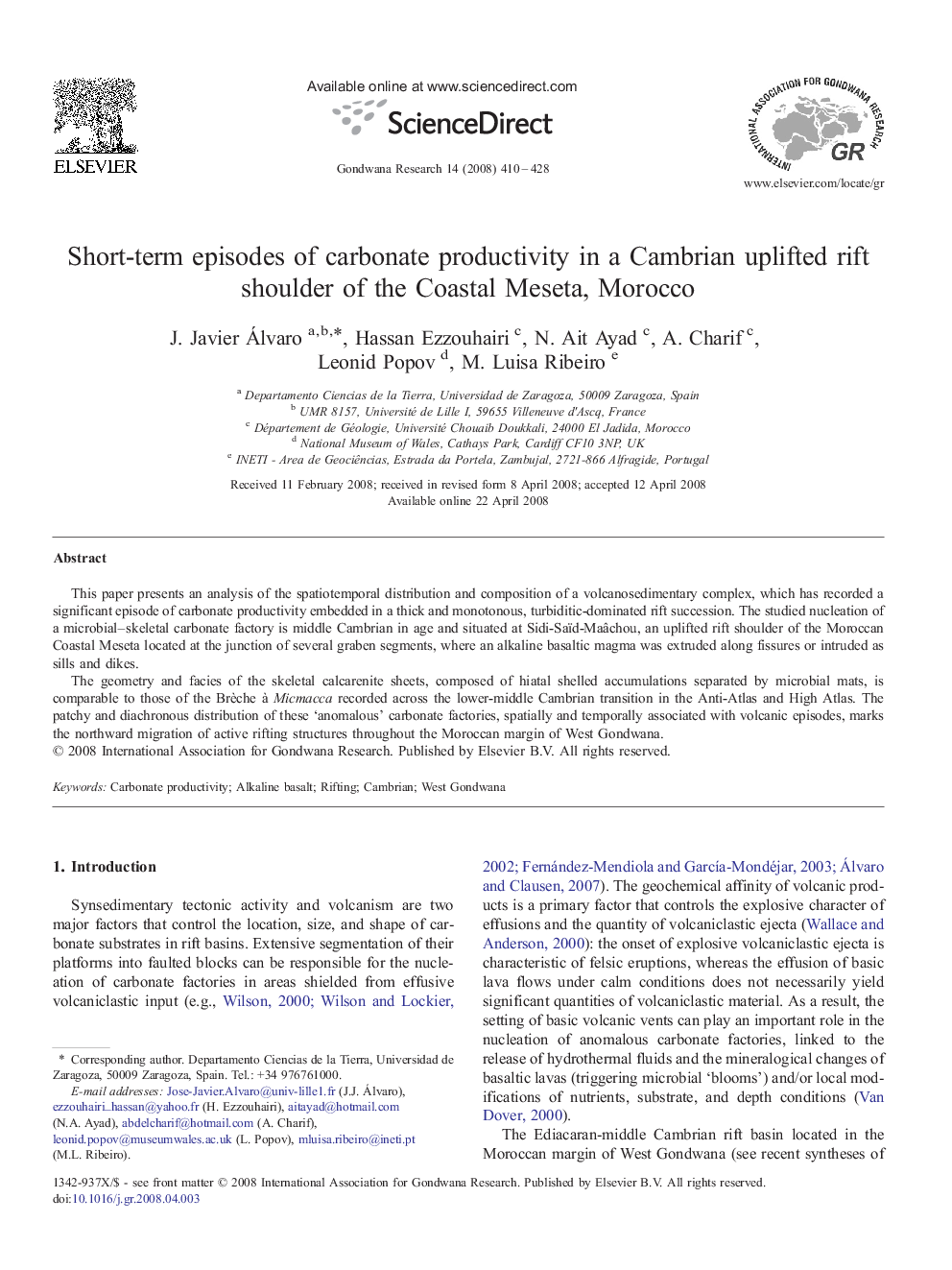| Article ID | Journal | Published Year | Pages | File Type |
|---|---|---|---|---|
| 4727884 | Gondwana Research | 2008 | 19 Pages |
This paper presents an analysis of the spatiotemporal distribution and composition of a volcanosedimentary complex, which has recorded a significant episode of carbonate productivity embedded in a thick and monotonous, turbiditic-dominated rift succession. The studied nucleation of a microbial–skeletal carbonate factory is middle Cambrian in age and situated at Sidi-Saïd-Maâchou, an uplifted rift shoulder of the Moroccan Coastal Meseta located at the junction of several graben segments, where an alkaline basaltic magma was extruded along fissures or intruded as sills and dikes.The geometry and facies of the skeletal calcarenite sheets, composed of hiatal shelled accumulations separated by microbial mats, is comparable to those of the Brèche à Micmacca recorded across the lower-middle Cambrian transition in the Anti-Atlas and High Atlas. The patchy and diachronous distribution of these ‘anomalous’ carbonate factories, spatially and temporally associated with volcanic episodes, marks the northward migration of active rifting structures throughout the Moroccan margin of West Gondwana.
